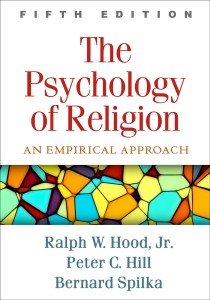A Tapestry of Faith and Struggle:
A Review of Religion at the Corner of Bliss and Nirvana
Lorentzen, Gonzalez, Chun, and Do's edited volume, Religion at the Corner of Bliss and Nirvana: Politics, Identity, and Faith in New Migrant Communities, published by Duke University Press in 2009, offers a richly textured and nuanced exploration of the complex interplay between religion, migration, and identity formation. This isn't a book that neatly ties everything up in a bow; instead, it presents a vibrant, often messy, reality of religious practice in the context of displacement, adaptation, and the ongoing negotiation of belonging in new cultural landscapes. The editors' ambition is evident from the outset: to move beyond simplistic narratives of religious assimilation or outright rejection, opting instead for a thorough examination of the dynamic, often contradictory ways in which religion shapes and is shaped by the migrant experience.
The book's strength lies in its diverse case studies, spanning a broad geographical and religious spectrum. The contributors, a mix of established scholars and emerging voices, delve into the lived experiences of various migrant communities, avoiding generalizations and offering a powerful counterpoint to homogenous understandings of religious identity. The chapters, while individually insightful, collectively paint a compelling picture of the diverse ways faith operates as a source of comfort, community, resistance, and even conflict within these newly formed communities.
For instance, the examination of Korean Christian churches in the US reveals the subtle yet significant role of religious institutions in mediating the transition from one cultural context to another. These churches, far from being passive recipients of American culture, actively negotiate their identity, retaining Korean traditions while simultaneously navigating the demands of a new society. This nuanced analysis challenges the often-oversimplified narratives of assimilation, revealing instead the complex processes of adaptation and cultural hybridization that occur within religious contexts.
Similarly, the studies focusing on Buddhist communities in the West highlight the creative ways in which religious practices are adapted and reinterpreted to meet the needs of migrant populations. The authors effectively demonstrate how established religious frameworks are reimagined, sometimes resulting in syncretic practices that blend elements of tradition with new cultural influences. This resonates deeply with the experiences of many migrant communities, demonstrating the fluid and evolving nature of religious identity in the face of displacement.
However, the book doesn't shy away from addressing the complexities and potential tensions inherent in religious life within migrant communities. Several chapters explore the internal conflicts that can arise within these groups, highlighting the challenges of maintaining unity and navigating differing interpretations of faith amidst the pressures of adaptation and cultural change. The exploration of internal divisions within these communities, based on factors ranging from generational differences to varying levels of assimilation, adds a crucial layer of realism to the narrative.
Furthermore, Religion at the Corner of Bliss and Nirvana effectively explores the political dimensions of religious practice within migrant communities. Several contributors examine how religion functions as a site of resistance, mobilization, and political advocacy, particularly in the context of struggles for social justice, immigration rights, and cultural recognition. The insightful analysis of how faith can be mobilized for social and political action within these communities provides a valuable counterpoint to purely individualistic interpretations of religious experience.
While the book's breadth is commendable, its very scope necessitates a certain degree of unevenness. The individual chapters, while strong in their own right, do not consistently achieve perfect coherence or synergy. Some readers might find the lack of a unifying theoretical framework slightly frustrating. However, this could also be viewed as a strength, reflecting the inherent diversity of the experiences being discussed. The absence of a strong concluding chapter that synthesizes the diverse findings could also leave readers desiring a more consolidated overview.
Despite these minor shortcomings, Religion at the Corner of Bliss and Nirvana remains a significant contribution to the fields of religious studies, migration studies, and ethnic studies. The book's meticulous research, engaging prose, and insightful analyses provide invaluable insights into the lived experiences of religious migrants and the complex dynamics that shape their faith and identity in new and unfamiliar environments. It's a book that challenges preconceived notions, fosters empathy, and encourages a deeper understanding of the intricate tapestry of faith and struggles woven into the lives of migrant communities worldwide. It is essential reading for anyone interested in the intersection of religion, migration, and the ongoing construction of identity in an increasingly globalized world.






